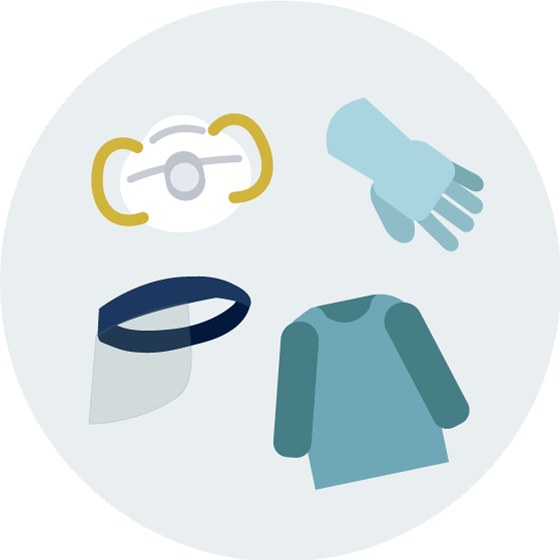Summary
- At your clinical rotation location, several levels of infection prevention and exposure controls will have been put into place to reduce the risk of person-to-person transmission of communicable diseases
- In the event of an outbreak, Medical Health Officers have the authorization to restrict student access to specific wards and locations at their discretion.
- PPE is considered a less protective infection prevention and exposure control measure because although the use of PPE is the most visible in the hierarchy of controls, it is effective only when used in conjunction with all the other control measures
- When used properly, PPE will protect the wearer from infection
- Whenever possible, use the most effective infection control measure(s) available
- PPE creates protective barriers between you and the patients you care for
- PPE includes the following elements:
- Gloves
- Gown
- Masks and respirators
- Eye and face protection
- Fit-tests for respirators are required to be renewed on an annual basis to continue to be valid1

